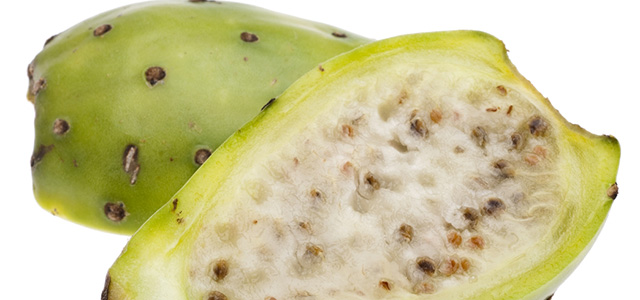Prickly pears, also known as “nopales,” are the edible fruits of the Indian Fig Opuntia, a spiny cactus with multiple flat pad-like outgrowths. While the pads of the cactus may be flat, the unusual looking fruits which grow from them are rounded and oblong, and like the rest of the plant are covered with tiny spines. Abundant in Mexico and the western United States, prickly pears are often used as sweet refreshment in candies, preserves and beverages, though they are also used in savory Mexican salads and dishes such as huevos con nopales. Healthy as well as delicious, prickly pear fruit is high in vitamin C, potassium, magnesium, and oddly enough, calcium. Increasingly, major supermarket chains are offering fruits such as these, though dedicated foodies in more far-flung rural areas may be forced to grow the cactus themselves.
Given that an unprepared prickly pear is covered with sharp spines, your first step is to put on a pair of common canvas work gloves. Though the spines aren’t at all dangerous, they can be an irritating nuisance. Hold the prickly pear down on a level cutting board, shear both ends off with a sharp chef’s knife, and throw the ends away.
Next, continuing to hold the prickly pear down on the cutting board, insert the tip of the knife into the skin of the fruit, and slice all the way down the length of the fruit. The slit should be complete from end to end.
Your next step is to remove the inedible spiny skin. Remove one glove and burrow your fingertip into the cut you just made, lifting upward to create a flap which can be pulled upward and peeled off. Apply a steady but gentle pulling force and rotate the fruit in your gloved hand as you peel with the other. Discard the skin.
You’ll now have a prickly pear fruit which is ready to slice and eat, as the tiny seeds which cover the fruit are completely edible. For those looking to make a juice out of the fruit for an unadulterated beverage, cocktail or sorbet, place the peeled fruit in a food processor or blender and puree them, straining the mostly liquefied pulp through a sieve and into a clean bowl. The juice is perfect by itself as a beverage or sorbet base, but is also excellent when added to lemonade, appropriate cocktail liqueurs, or used in a vinaigrette.


![Making Mealtime Matter with La Familia: Easy Sofrito [Video]](https://thelatinkitchen.com/wp-content/uploads/2015/10/sofrito-shutterstock__0-500x383.jpg)
![Easy Latin Smoothies: Goji Berry Smoothie [Video]](https://thelatinkitchen.com/wp-content/uploads/2015/12/goji_berry-shutterstock_-500x383.jpg)
















![Fun and Fast Recipes: Fiesta Cabbage Salad [Video]](https://thelatinkitchen.com/wp-content/uploads/2015/11/fiesta_cabbage_slaw-shutterstock_-500x383.jpg)









